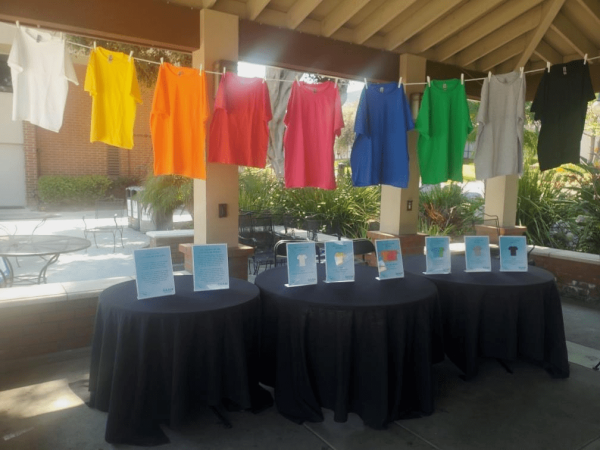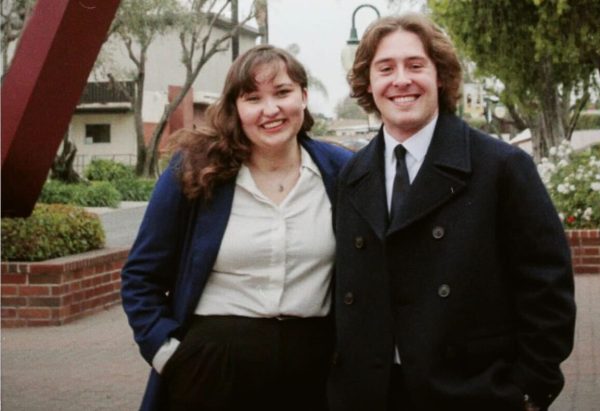High number of Blue whale deaths raise concerns
A surfer prepares to enter the water along the coast of San Francisco. Further south in the Pacific coastline, three dead Blue whales have washed ashore in the past mo
October 1, 2007
A traffic jam of 900-foot cargo ships at the Ventura and Long Beach harbors may be the cause of the unexpected deaths of three Blue whales this September. Environmental activists and some members of the Biola biology department are calling for action to prevent other whales washing ashore dead.
The presence of Blue whales off the Southern California coasts is not unusual during the late summer months, since this is the season that the whales make their summer migration from Mexico to Central America. The Santa Barbara Channel is home to more than 200 whales that are feeding at this time of year. However, massive cargo ships also occupy the coast, and many are unaware of the whales beneath.
Biologists and investigators believe that ships are the culprits in the unexpected deaths of the three monstrous whales. The ships unintentionally collide with the whales but don’t notice because the ships are not shaken or damaged.
The size of the whales is miniscule in comparison to the enormity of the cargo ships along the Santa Barbara Channel. The whales can be 70 to 100 feet long, weighing more than 100 tons. The ships, though, can be 900 feet long and weigh thousands of tons depending on the amount of cargo they are carrying.
There have only been six reported Blue whale deaths since 1980, making the loss of three in two weeks quite unnerving. Under the blubber of two of the three deceased whales that were hit off the coast of Ventura County there were a number of broken bones and massive bruises, indicating that these deaths were not natural but associated with trauma. There is no word of the cause of death of the third whale that was found drifting off of the Oil Platform Gail in Santa Barbara, but it is highly probable that it is also connected with the cargo ship accidents.
Marine officials and scientists from the Channel Islands in Santa Barbara are puzzled by these deaths and are led to think that the Blue whales may be suffering from the effects of domoic acid, a substance composed of harmful algae. This substance impairs the central nervous system and alters the whale’s ability to hear and sense that ships are nearby.
Mat Curto, captain of the Condor Express whale watching unit in Santa Barbara said, “It is really too early to tell why the whales are settling in the main shipping lanes. They do not realize that they are in the path of massive ships. They simply see that there is food and naturally want to stay.”
This investigation still stands at a premature level. Though there are not solid facts at this point, Curto speculated that water pollution could be endangering the whales.
“The ships have radars that track exactly where they need to go, but the whale’s only have their senses to gauge where the ships are at, therefore that is why the domoic acid in the water is being looked in to as one of the main causes of dysfunction among whales,” Curto said.
Dr. Rafe Payne, chair of biological sciences at Biola suggests that action could be taken by the cargo ships to ensure the safety of the Blue whales.
“If the ships knew the behavior of whales and where they are swimming,” said Payne, “then they would know the areas to stay away from.” Though the cause is unknown, Payne said that the whales may be getting hit while sleeping because they are so accustomed to hearing the sound of the ships.
There are now new precautions being taken in light of the recent incidents. The National Marine Fisheries Service and U.S. Coast Guard notified the ships on the channel to be cautious of the whales while traveling. There are also flyovers being coordinated to watch the activity of the whales in relationship to the ships.
Hillary Karwowski, a biology major at Biola, feels that measures need to be taken to prevent these accidents from occurring.
“Blue whales, one of the largest species on earth, are prized and beloved by biologists all over the world,” said Karwowski. “To have three successive deaths in a matter of weeks is both appalling and shocking. The cause of the deaths need to be researched thoroughly and measures need to be taken in order that we may prevent this from happening again.”
Even though these deaths are tragic, scientists from Santa Barbara are hoping to utilize what is left of the whales. Scientists were able to salvage parts of the whale carcass to display at the Santa Barbara Museum of Natural History.







